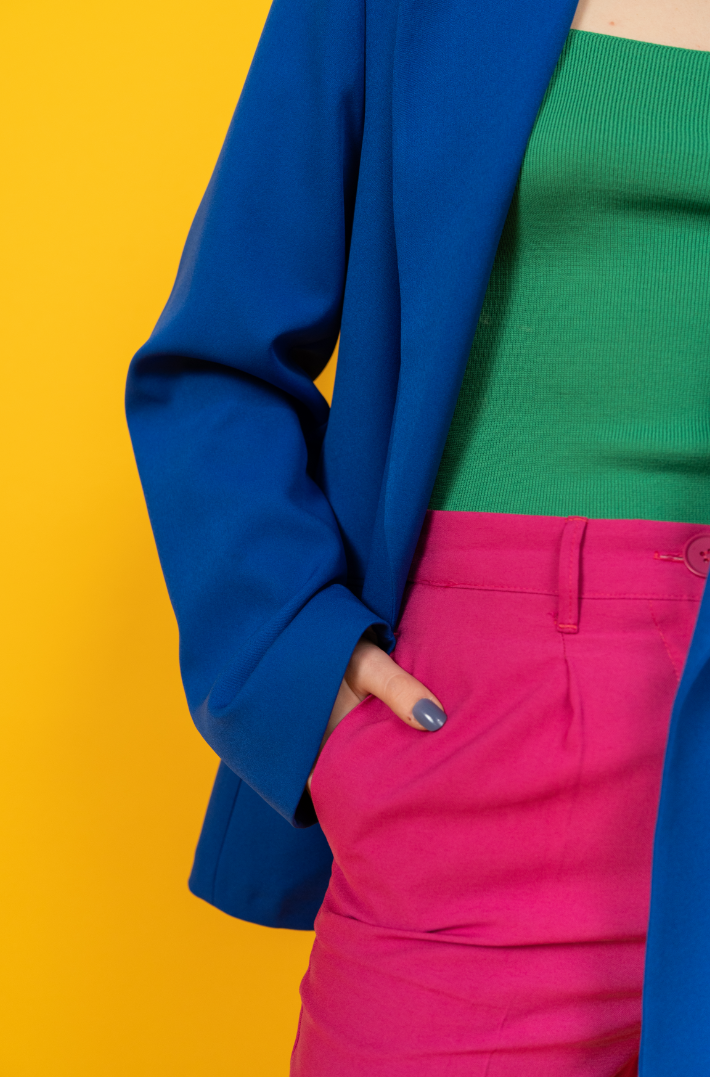Over the past several years, my local thrift stores have become less exciting. The amazing pieces are snapped up quickly, the racks are overstuffed with damaged or poor quality items, and the prices have gone up. Some Goodwill stores have even removed their dressing rooms! My local mall has never offered the variety of colors and styles that I found in thrift stores (not to mention the low prices), so these developments have saddened me greatly. I still pop in to thrift stores from time to time, but I’ve shifted a lot of my secondhand shopping to online resale sites.
Different resale sites have different shipping policies and structures. Some operate on consignment, while others are made up of individual sellers. Generally speaking, these sites are going to be more expensive than your local thrift store, but there are still great bargains to be had. I sometimes think of the higher prices as a convenience fee for not wading through the depths of my local Goodwill.
The Practical:
Ask for measurements (and know your own). Many sellers on sites like Poshmark list clothing measurements in their listings. But if they haven’t, you can always ask! Usually, people are happy to give them. Just knowing your inseam for pants and your ideal pit-to-pit width for tops can drastically cut down on the amount of things you order that don’t fit you. I pretty much always ask for measurements when shopping resale, and I rarely buy anything without seeing the measurements first. This practice has saved me from a lot of ill-fitting purchases.
Be critical about photos. I learned the hard way that on sites like Poshmark, there’s no rule about portraying an item’s color even remotely accurately. Sellers can filter their photos to their heart’s content. I look for photos that are taken in clear, neutral lighting, without funny casts or colors that seem artificially sharp or intense. I also appreciate when a seller has described the color in their listing description. If the item is from a known brand, I google to see what the item really looks like under different lighting conditions.
Make offers - and don’t forget about shipping costs. On sites like ThredUp, you can get free shipping by bundling your items into one cart. On sites like Poshmark, eBay, or Mercari, you’re unfortunately paying shipping for each individual item. Keep this in mind when making offers! An item might be listed for $10, but in many cases shipping will take you closer to $20. Many sellers cross-list their items on different sites, so I usually do a quick check to see if I can get the same item for less on a different platform. Don’t forget to make offers! Many sellers will accept a lower price just to get the item out of their house.
The Philosophical:
Don’t get sucked into the hunt. Just because clothes and accessories on these sites are cheaper than retail doesn’t mean they’re a good deal, or that your purchases don’t matter. It’s easy to get carried away and realize that you’ve spent $150 on random items. I try not to get on resale sites unless I already have an idea what I’m looking for, even if that’s just a specific color. Then I hit “like” or put items into my cart and leave them there for a few days. At that point, I’ll have a better idea of whether the item is a true need/desire, or just a passing impulse. As a bonus, many sellers will go ahead and make you a lower offer when you’ve liked something or added it to your cart.
Filter purchases through the lens of your ideal style. Just because something’s cheap doesn’t mean it’s a good fit for you or your wardrobe. Maybe that dress is the absolute perfect color, but you already know it’s not a good cut for you. Maybe that sweater is your ideal silhouette, but the color is one you never like wearing. Maybe you found a purse in the perfect shape and color but you know the size is going to be impractical for you. Just like in thrift stores, it can be easy to justify things you wouldn’t normally buy on the basis of them being a “good deal.” But if it isn’t right for you, it’s not a good deal, even if it’s free. Ask yourself what you’re going to wear those new shoes with and if you really need a new winter hat.
Use resale sites for inspiration. I use resale sites for ideas just as much as for actual shopping. I often save things that I know I’m not going to buy, because I want to remember to keep an eye out for something similar that will work better for me. Buying the first thing that inspires you isn’t always the greatest idea. Be patient and wait for exactly the right item.
Bonus:
Resell items that don’t work for you. One of the worst things you can do is buy loads of items from resale sites, find that they don’t fit or aren’t the color you thought, and shove them into the back of your closet. List these items yourself to get some of your money back!
Want to work with me? My fall books are open for color analysis, image analysis, and style coaching packages. You can explore all of them here!



